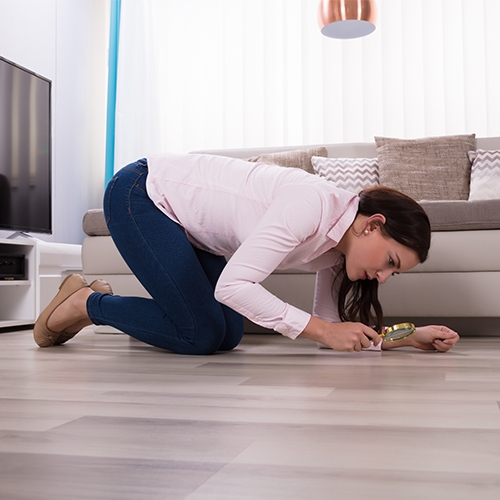Click Lock
Description
Hardwood, laminate, and vinyl click lock products are created with a unique edge like a puzzle piece. Two sections of flooring "click" together and are "locked" firmly to one another. Click lock flooring floats; it's not attached to the subfloor. As a result, this is a simple, glue-free installation that is DIY-friendly.
When using click lock products, you must let the material "acclimate" inside at room temperature before you begin your installation. Otherwise, expansion, contraction, or warping may occur. The acclimation time varies by material, so consult the documentation that comes with your flooring.
Additional Tips: Be sure to provide space at the wall for expansion on all sides, and always begin the first row with the tongue (not the groove) facing away from the wall.
Requirements
Can be used on ground-level or above-ground subfloors, including those made of plywood, OSB board, concrete, tile, or radiant heating systems. The subfloor must be clean, level, and free of bumps or loose nail heads before installation. A thin underlayment can also be used to decrease noise.


